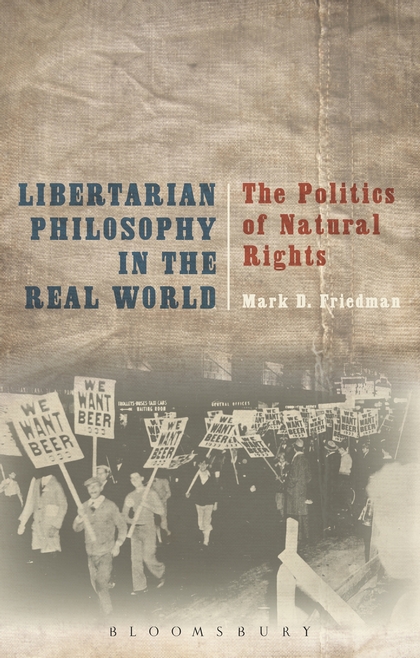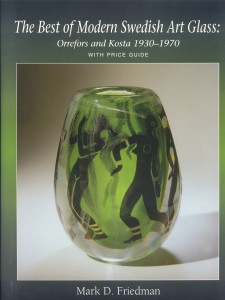Depending on one’s perspective, one of the joys (or frustrations) of reading Nozick is his unique style. As Matt Zwolinski recently wrote in reviewing The Cambridge Companion to Nozick’s Anarchy, State, and Utopia, (Bader and Meadowcroft eds): “One cannot read too far in it without coming across an idea that is brilliant, fecund, intriguing . . . and dropped almost as soon as it is introduced. Whole books, if not whole academic careers, could be devoted to working out in detail the ideas that Nozick relegates to mere footnotes and asides.” One supposed example of Nozick’s tendency in this regard is his thought experiment involving the “experience machine” (see ASU, 42-5).
This apparent digression has been the subject of extensive analysis and discussion in the literature, and is thus the subject of one of the essays comprising The Cambridge Companion, Fred Feldman’s “What We Learn From the Experience Machine,” at 59-86. I will cut to the chase, and simply say that Feldman’s contribution represents a classic case of not being able to see the forest for the trees. More explicitly, while he correctly identifies what this imaginary case is not about, he misses its point entirely.
The “experience machine” passage in ASU is short, and you are encouraged to read it for yourself. Very, very briefly, Nozick posits that were there a machine that could give us “any experience you desired,” the typical person would still not plug into it. We would not, because “Plugging into the machine is a kind of suicide” (ASU, 43). By way of further explanation, Nozick says that “Perhaps what we desire is to live (an active verb) ourselves, in contact with reality. (And this, machines cannot do for us.)” (45).
After summarizing Nozick’s hypothetical in more detail than I, Feldman considers various philosophical targets against which Nozick might have aimed it. These include certain forms of utilitarianism, ethical hedonism and psychological hedonism. He concludes that while it is a “wonderfully provocative thought experiment” (CC, 79), it utterly fails as an argument against any of its plausible targets. Feldman is correct, but only because the experience machine scenario is not an argument against, but an important part of Nozick’s argument for libertarian rights.
To see this, we should start just 10 pages earlier in ASU, where Nozick first articulates the outline of his argument for “side constraints” on how people may be treated. He draws on what he regards as intuitively compelling first principles, invoking Kant’s second formulation of the Categorical Imperative, which Nozick quotes at ASU, 32: “Act in such a way that you always treat humanity, whether in your own person or in the person of others, never simply as a means, but always at the same time as an end.”
Another way to express this idea is to invoke, as Nozick does, the “separateness of persons.” (see ASU, 32-33). When we speak of individuals having to make sacrifices for the greater or common good, we are, says Nozick, perverting the language by pretending that everyone gains from whatever objective is being promoted. In reality:
There are only individual people, different individual people, with their own individual lives. Using one of these people for the benefit of others, uses him and benefits the others. Nothing more. What happens is that something is done to him for the sake of others. Talk of an overall social good covers this up. (ASU, 33).
From the starting point of this strong, widely-held intuitive commitment, Nozick conceives a way to derive libertarian rights:
Thus we have a promising sketch of an argument from moral form to moral content: the form of the argument includes F (moral side constraints); the best explanation of morality’s being F is p (a strong statement of the distinctness of individuals); and from p follows a particular moral content, namely, the libertarian constraint [prohibiting aggression against another]. (footnote omitted) (ASU, 34).
In other words, we can only explain our instinctive embrace of side constraints by reference to some underlying moral view that entails libertarian rights. He is obviously relying here on an “argument from the best explanation.” In simplest terms, this argument holds that the best explanation of a known truth is itself probably true. Notice, however, that Nozick has not yet attempted to specify his “p” from above, i.e. what is “distinct” about people that might explain why they are entitled to a special moral status.
Nozick then moves to the subject of animal rights (ASU, 35-42), because “We can illuminate the status and implications of moral side constraints by considering living beings for whom such stringent side constraints (or any at all) usually are not considered appropriate: namely nonhuman animals” (35). Although Nozick is not very clear on why this is so, he holds that “Some higher animals, at least, ought to be given weight in people’s deliberations about what to do” (35), beyond merely refusing to inflict unnecessary pain on them. Importantly, he asks at the very end of this section (which immediately precedes his experience machine scenario): “But if not only the animals’ felt experiences are relevant, what else is?” (ASU, 42).
The experience machine example is clearly intended to show that our moral worth is (also) linked to something beyond our pleasures and pains, as Nozick introduces it by noting that “There are also substantial puzzles when we ask what matters other than how people’s experiences feel ‘from the inside'” (ASU, 42, his emphasis). And, he begins the next section (“Underdetermination of Moral Theory”) with this key query: “What about persons distinguishes them from animals, so that stringent constraints apply to how persons may be treated, yet not to how animals may be treated” (45).
Soon we have Nozick’s answer. In addition to the three classic traits often proposed (rationality, free will and moral agency), he suggests “the ability to regulate and guide [our] life in accordance with some overall conception [we] choose to accept” (49). Nozick conjectures that this addition is necessary because, “A person’s shaping his life in accordance with some overall plan is his way of giving meaning to his life; only a being with the capacity so to shape his life can have or strive for a meaningful life” (50). It is this notion that best explains our intuitive commitment to side constraints.
Of course, a person plugged into the experience machine cannot shape his life or strive to give it meaning; he can only pretend to do so, and this is not good enough for rational agents. Thus, in the “big picture” of Nozick’s argument, it is clear that the experience machine is simply a way of identifying the morally relevant difference between people and all other nonhuman animals. Animals may not be reducible to their sensory inputs, but they are not rational agents, and don’t share our unique capacity to imbue our lives with meaning through our self-conscious actions. This thought experiment is not a digression, but a link in Nozick’s chain of reasoning.







Excellant, excellant post. I have been attempting to muddle my way through ASU recently, and while I find his thoughts fascinating, I’m definitely missing key elements in his reasoning, and sometimes find myself confused and having to re-read parts. Your post here helped illuminate just what I was missing from this section, so thank you.
Hi Alex:
Thanks, that’s nice to hear. If it makes you feel any better ASU is tough sledding even for those with substantial backgrounds in academic philosophy. I have had to read certain sections many times before getting the point. Fortunately, I don’t believe it’s necessary to fully understand every paragraph in order to get the logic of Nozick’s arguments.
I agree with the previous comment; this is a brilliant post, and I would encourage you to turn it into a full paper and submit it to a professional philosophy journal.
It’s worth pointing out that from the separateness of persons, the libertarian side-constraint against aggression doesn’t necessarily follow. All that follows is the rejection of utilitarian aggregation, which sacrifices X’s interests to the interests of Y and Z. The separateness of persons is entirely consistent with a non-aggregative conception of the common good, in which X is coerced for the shared benefit of X, Y and Z. For instance, the separateness of persons is not violated when an employer is prevented from discriminating on the basis of race, if it is granted that living in a society without racial antagonism is in everyone’s interests, including the employer’s.
One might object that the experience machine argument does exclude such coercion, as it requires each individual to bestow his own meaning on his own life – and this may include a racist meaning, if he so chooses. But what the argument shows is that we want to pursue genuine and not illusory goods. Since a racist employer’s preference for a segregated workplace rests on a misconception of what is objectively valuable, his deeper interest in pursuing genuine goods counts against permitting him to discriminate.
So it seems that the path from the separateness of persons through the experience machine argument to libertarian side-constraints is not as easy as Nozick supposed.
Hi Paul:
Nice to hear from you again, and I appreciate the kind words. But, I think any praise is owed to Nozick who, as usual, has found a clever and entertaining way to make his point. The purpose of the “experience machine” should be evident to anyone who is at all attuned to the overall thrust of his argument. Sadly, too many seem to miss it.
I agree that the “separateness of persons” argument by itself doesn’t get us to side constraints. Here too, this idea is just a link in the chain. Nozick needs to show that coercion, even to keep an individual from doing something self-destructive or unethical, is morally impermissible unless required to prevent aggression. I think the point he would make is that coercion is a morally inappropriate response to persons qua rational agents.